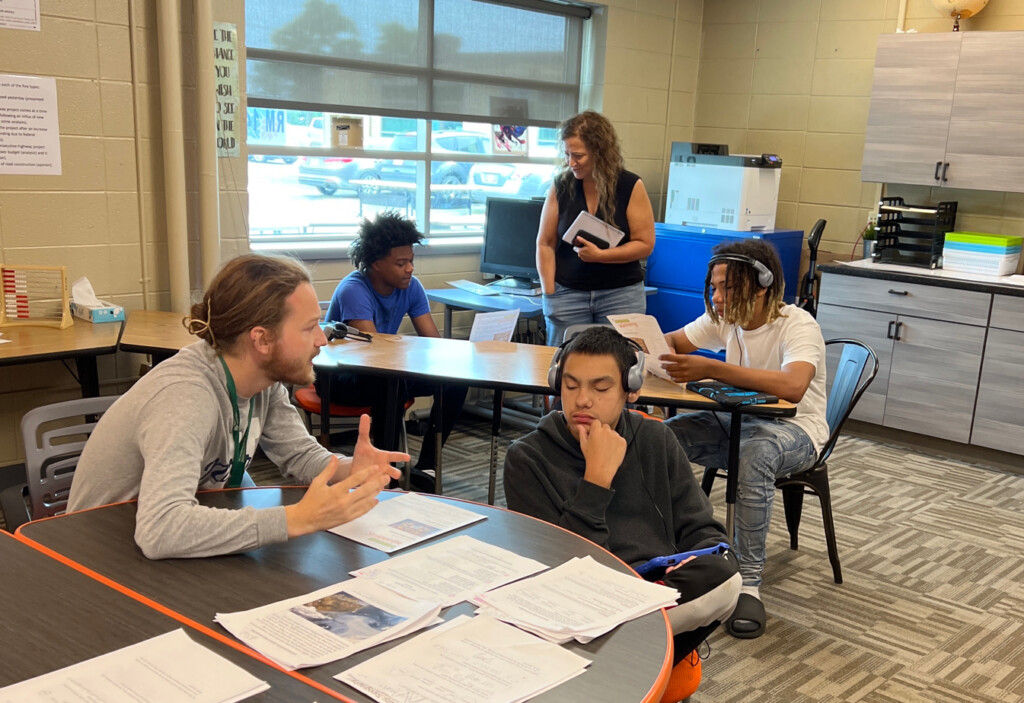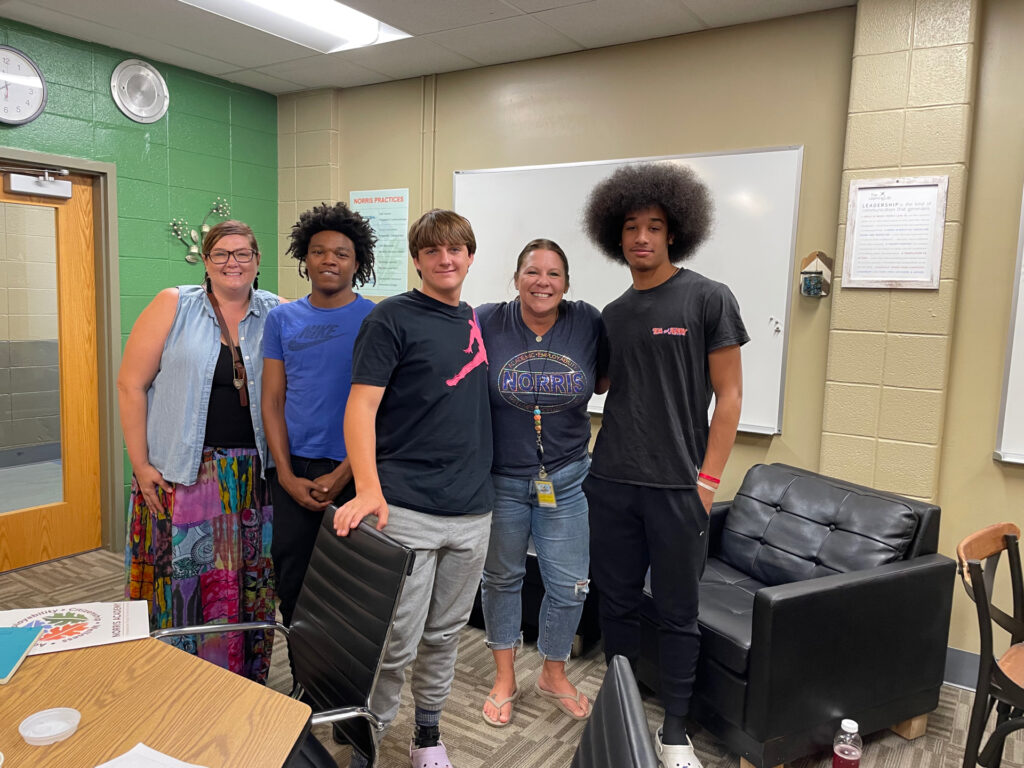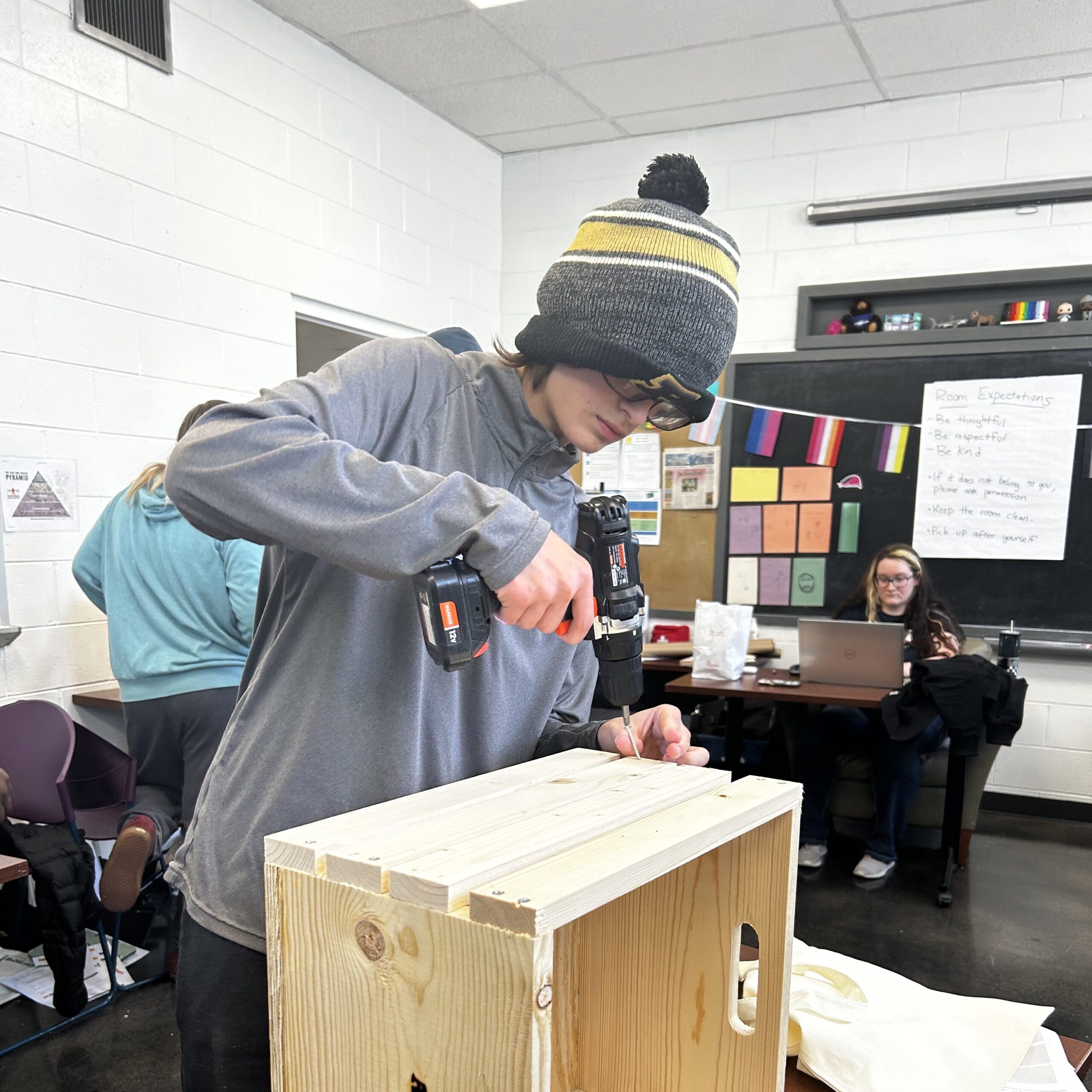Where Does Work to Imagine a Learner-Centered Ecosystem Begin?
Key Points
-
The Norris School District in Wisconsin exemplifies how learner profiles and community connections can enhance authentic learning experiences for young people, fostering a culture of belonging and responsibility.
-
Purdue Polytechnic High School demonstrates the importance of enabling conditions, such as creating microschools with access to shared services, to support a learner-centered approach while ensuring scalability and access to a variety of resources.

By: Alin Bennett
It’s a big year for democracy. In America and around the world, the justness, equity, and strength of democracy is being tested. Surrounding these debates are many questions about how to create the future our children deserve, with an education that develops their resilience for an unwritten and ever-changing future. Amid frustration centered on the challenges facing public schools and concern over the shrinking of “Main Street” in towns across the country, community-based, learner-centered ecosystems offer a path forward. In this design for public education, learning leverages the assets, insights and expertise of a wide variety of organizations and people in a community, prioritizing learning that is tangible and relevant to each young person.
But how can we make these ecosystems possible throughout the country? Ecosystems for the Future of Learning, a report conducted by The History Co:Lab and Education Reimagined, commissioned by the Carnegie Foundation for the Advancement of Teaching, examines this question. The culmination of months of fieldwork, this report outlines what an ecosystem development process might look like in different communities and what’s needed to make the ecosystem successful.
The report established and utilizes the Ecosystem Readiness Framework to show how communities could grow their ecosystem by starting with one of four focus areas: people, practices, connections and conditions. Here, I explore key insights from two of the sites exploring ecosystems through the lens of this framework. The hope is that inventors, educators, funders and community leaders see that this approach is not just a dream, but a viable opportunity with roots that we can all contribute to nurturing, supporting, and growing.

PRACTICES: Norris School District
“Aligned sets of methodologies and approaches that develop the networked learning experiences of young people and the ways in which families, educators and community members can contribute.”
As a rural, public school district in Waukesha County, WI, Norris School District presents a unique opportunity for young people to engage with learning in ways that are authentic to them. Norris primarily serves learners whose ambitions, challenges or needs couldn’t be met by the conventional school system, including adjudicated youth. The passionate educators at Norris ensure a culture of belonging, respect and responsibility, all while developing the skills needed for a meaningful future.
One piece of Norris’s framework centers around learner profiles, which help each person to identify and attain goals across the four dimensions of academics, employability, citizenship, and wellness. This practice helps learners understand themselves more fully, such as what motivates and interests them. In turn, this offers the educators at Norris additional ways to connect with their young people as full human beings and set goals for continued learning.

As part of the exploration work for this report, site leaders visited some of each other’s sites. While visiting FabNewport, a vibrant youth development organization in Newport, RI, leaders at Norris saw examples of how they could further expand opportunities for their learners beyond their campus. Norris witnessed deep partnerships within FabNewport’s community that opened worlds for learners. These included a wildlife sanctuary, local farms, and art studios. By seeing FabNewport’s community connections in action, the leadership team at Norris began brainstorming ways to connect their learners with more opportunities, particularly within their extended community. To bring this expanded vision to life, the Norris team has mapped their community assets—identifying over 100 resources—and begun forging relationships with these potential partners to serve as field sites and learning hubs.
What Norris is building toward is the ability for learners to integrate meaningful community connections into accredited learning, supporting each learner in their individual goals. By connecting learning experiences back to the individual’s learner profile, Norris can meaningfully validate learning that continually happens all around us. Building these bridges and richly adding onto existing practices is one way learner-centered ecosystems can begin to flourish.
CONDITIONS: Purdue Polytechnic High School
“The financial and policy forces that combine to create an enabling environment in which an ecosystem can be built and operate.”
Purdue Polytechnic High School (PPHS) is a public charter school founded by Purdue University and the city of Indianapolis in partnership with community, industry and academic leaders, and a statewide innovative charter network operator with multiple locations and no admission requirements.
The PPHS team has big ambitions to engage learners with an ecosystem approach to learning. However, this rich learning environment still feels the tension of providing every learner with a unique, relevant experience within the structures of a comprehensive high school. To explore learner-centered ecosystems, PPHS opened a microschool with two advisories, serving as home bases for young people to build relationships and learn in a more personalized setting. It can be difficult to ensure every young person is known in a school of several hundred, but with microschools, anonymity is not an option. While the viability of microschools are historically fragile, these microschools have a huge benefit—access to shared services.

Educators and learners in the microschools can utilize all of the services of the larger high school—dining, recreation, even support staff services and human resources. These shared services lower the financial overhead of the microschools, allowing learners to access the resources, all while being in a smaller environment where they can be seen and known. These conditions allow the microschools to be nimble and serve learners in dynamic ways.
Leveraging the ability to connect to shared services, this pilot proved successful. As PPHS explores what comes next beyond their expansion, it’s clear that this microschool model—which mirrors the home base of a learner-centered ecosystem—has viability for helping all learners access meaningful opportunities.
With 13 sites featured in the full report, these are just two examples of how sites are beginning to develop learner-centered ecosystems and identify areas for intentional expansion. These ecosystems will require many moving parts to work in harmony to successfully exist. By identifying a strong foundation of people, practices, connections, or conditions, ecosystem engineers can add the pieces their community needs for authentic and meaningful learning experiences for all young people.
Be sure to register for the upcoming Getting Smart Town Hall to learn more.
Alin Bennett is the Vice President of Practice and Field Advancement at Education Reimagined.





0 Comments
Leave a Comment
Your email address will not be published. All fields are required.